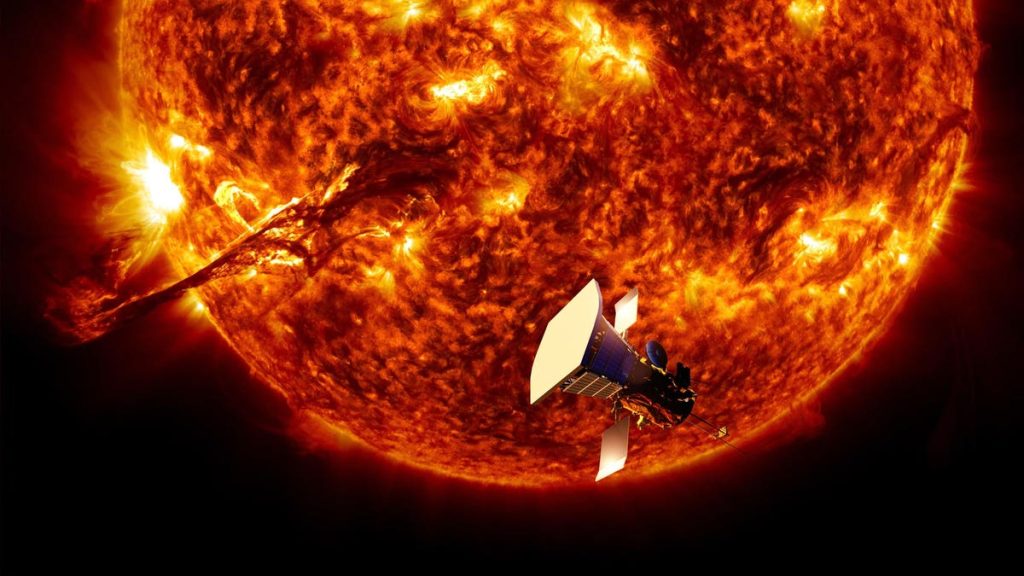NASA’s Parker Solar Probe has become the first spacecraft ever to fly through a coronal mass ejection from the sun—a powerful eruption of billions of tons of plasma.
The closest spacecraft to the sun, launched in Aug. 2018, spent two days within a CME while just 5.7 million miles (9.2 million kilometers) from the solar surface.
For context, Mercury—the closest planet to the sun—is 23 million miles (37 million kilometers) from the sun and Earth is a whopping 93 million miles (150 million kilometers) distant.
As revealed in a paper published in The Astrophysical Journal, Parker passed right through the CME on Sept. 22, 2022, crossing the wake of its leading edge—its shock wave.
The moments were captured by the probe’s Wide-field Imager for Solar Probe (WISPR) instrument and are published on YouTube.
Closest To The Sun
“This is the closest to the sun we’ve ever observed a CME,” said Nour Raouafu, a Parker Solar Probe project scientist at the Johns Hopkins Applied Physics Laboratory (APL) in Laurel, Maryland. “We’ve never seen an event of this magnitude at this distance.”
CMEs are large expulsions of plasma and magnetic field from the sun that often form in the wake of solar flares. Both have their roots in the twisting and realignment of the sun’s magnetic field.
When directed towards Earth, a CME can cause a geomagnetic storm that can change the shape of our planet’s magnetic field, leading to spectacular displays of aurora. However, severe examples could also harm satellites, disable communications systems and cause continent-wide blackouts.
And that’s exactly what Parker flew right through.
A Near-Miss For Earth
During the event the Parker probe detected particles accelerating up to 840 miles (1,350 kilometers) per second, which makes it on a par with the most powerful solar storm ever observed—the Carrington Event. On Sept. 2, 1859, British astronomer Richard Carrington observed a blast of white light from the sun for about five minutes. The resulting flare and CME caused a geomagnetic storm that brought displays of aurora across the planet.
Luckily, the CME Parker flew through was on the far side of the sun and wasn;t directed at Earth.
It’s estimated that a solar storm today of equal proportions to the Carrington Event—given our technological society—could cause over $41.5 billion of economic loss per day in the U.S. alone. “The potential damage of this class of event, large and very fast CMEs, can be colossal,” said Raouafi.
The news comes as NASA is about to launch its Heliophysics Big Year, a celebration of solar science and the sun’s influence on Earth and the rest of the solar system. It will begin with Oct. 14’s annular solar eclipse—which will cross nine U.S. states—and ends with Parker Solar Probe’s closest approach to the sun in Dec. 2024.
Wishing you clear skies and wide eyes.
Read the full article here








